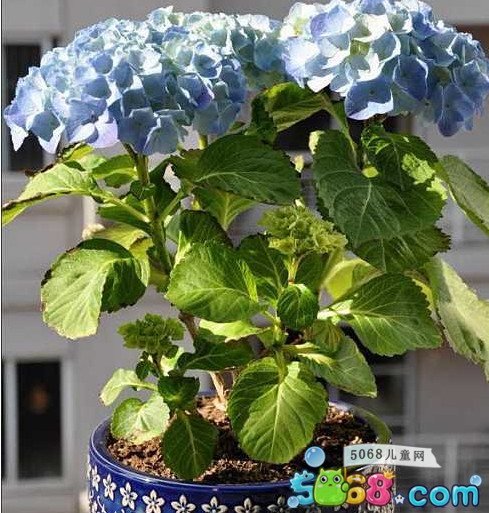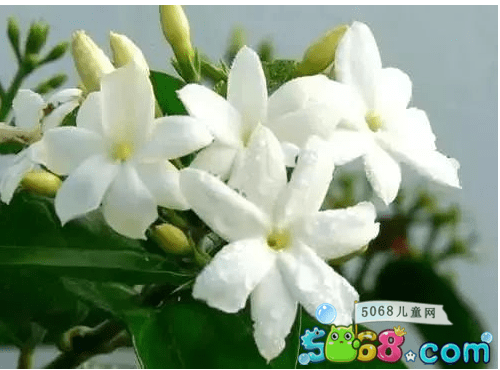Culture methods and matters needing attention of potted hydrangea
Hydrangea full pattern, large and beautiful, flower color is also very beautiful, pleasing to the eye. A lot of people like to breed on this flowerpot. The following small series introduces some cultivation methods of potted hydrangea, I hope everyone likes it.

Breeding method of potted hydrangea
1. Soil: Hydrangea growing soil is more suitable for loose, fertile, well-drained sandy loam. When planting, it is better to use 4 parts humus soil, 3 parts garden soil, 2 parts river sand and 1 part cake fertilizer. Or mix 4 parts compost soil, 5 parts sand and 1 part cake fertilizer, or mix 6 parts humus soil, 3 parts sand (or ash) and 1 part cake fertilizer. After pouring water into the upper basin, leave it indoors for maintenance and leave the room in early May.
2, watering: hydrangea leaves are larger, need more water. Spring and summer watering should keep the soil moist. In high temperatures, water should be poured once in the morning and evening, and pay attention to proper shade. Water less in winter, just keep the soil moist. During the growing period, watering should be sufficient to keep the potting soil moist at all times, especially in summer, when more water should be given.
3. Lighting: Hydrangea is a short-day plant. After the room is ejected, it should be placed in a semi-negative environment for maintenance. In summer, move to well-ventilated shade to prevent sunburn. After September, the light intensity will gradually decrease. In order to promote flower bud differentiation, the flowerpot should be moved to a place with more light.
4, temperature: Hydrangea likes warm environment, growth temperature is 18~28°C, winter temperature is not lower than 5°C. Flower bud differentiation takes 6 to 8 weeks at 5 to 7°C. Temperature at 20 °C can promote flowering. After maintenance, the flowers can be kept at 16 ° C, which can prolong the flowering period, and pay attention to high temperature, so that the flowers fade quickly.
5, fertilization: Hydrangea, like fertilization, during childbirth, generally every 15 days or so should be smeared with diluted pizza fat. To keep the potting soil acidic, 0.2% ferrous sulfate can be added to the manure water along with liquid fertilizer. Adding 0.5% calcium superphosphate once or twice during bud stage can promote flower color.
6, pruning: Hydrangea in early spring of March every year should cut off diseased branches and twigs from the base, retain 3~5 strong main branches and short branches, leave 2~3 buds per branch, promote new branches, and make its flowers lush.。By pruning and shaping, trees can be compact, plump, symmetrical, ornate, large, and colorful. If there is no pruning, the base of the old branches will lignify for more than 3 years, and it is not easy to sprout new branches. It is easy to form emptiness in the lower part of the plant, which will affect the ornamental value.
7. Pests and diseases: hydrangea disease mainly includes blight, powdery mildew and leaf spot disease. It can spray 65% sensitive zinc wettable powder 600 times. Hydrangea's main pests are mites and blind mites, which can be sprayed 1500 times 40% omethoate EC.
Hydrangea Notes
1, hydrangea such as acidic soil, not tolerant of thin and saline soil. Poor growth in alkaline soil, yellow leaves, suitable for loose, fertile, rich in humus acid soil. Due to the influence of pH, its color changes from white to red and from red to blue-blue.
Hydrangea flowers are moved indoors in October and mid-October, controlled watering, and kept at room temperature around 5°C to promote dormancy. Remove the leaves before entering the room to prevent them from rotting. Starting in mid-December, it moves to sunny areas where the temperature is maintained at 15-20°C, promoting the growth of branches and leaves, and leaves the room in late April.
March hydrangea inserted seedlings can be moved into 10 cm pots after rooting and then planted in 16 cm pots in mid-June. June's good. A draft pick. If you choose your heart in early June, you can form buds by mid-August. From July to August, seedlings from May to June can be planted in 16 cm pots. In order to promote bud formation in the same year, the later hearts should be picked before September, otherwise buds cannot form in the same year.
4, hydrangea like fertilizer, during the growth period, generally every 15 days coated with a layer of decadent pancake fat. In order to maintain soil acidity, 1 to 3% ferrous sulfate can be added to the fertilizer solution for application. Regular watering of feces can make plants grow green, and buds can be added with 1 to 2 times potassium dihydrogen phosphate to make flowers more beautiful. Cake fertilizer application should avoid the sky, so as not to cause diseases and insect pests, damage roots.
Hydrangea leaves large, lush branches and leaves, large water demand. Water should be poured in spring, summer and autumn of the growing season to keep the basin soil moist. In summer, the weather is hot and evaporation is large. In addition to water, water is sprayed onto the leaves every day. Hydrangea roots are fleshy roots. Water should not be excessive. Avoid water in the basin, otherwise it will rot.
6. After September hydrangea, the weather is getting colder and colder, and the amount of watering should be gradually reduced. Move rooms to rooms before frost falls and keep room temperature around 4 degrees. Remove the leaves before entering the room to prevent them from rotting. In winter, plants should be placed indoors in sunny places, good years, after rain should leave the room. Hydrangea is relatively widely managed and has fewer pests and diseases. It is an ideal potted flower that is easy to manage and cultivate.
Hydrangea breeding method
1. Pumpkin: rationing should be done before germination in early spring. Branches that have taken root are separated from the parent plant and planted directly. Water should not be too much. It should solidify in semi-shade and then transfer to normal storage after germination.
2. Beading: When the buds sprout, they can grow after 30 days. In the spring of a good year, they are separated from the mother plant and transplanted with the soil. They can bloom in the same year.
3, cuttings: in the rainy season cuttings, cut the top branches, about 20 cm long, remove the lower leaves, cut the appropriate temperature is 1318°C, rooting 15 days after insertion.
Time: 2019-05-12 Click:
- Prev

Introduction to the Culture and Propagation of Carnation
Carnation is a flower that we often see in our lives. It has other aliases: lion's head, carnation, carnation, dachshund and so on. It is native to the Mediterranean region and is the most widely used flower in the world. one. How are carnations cultivated? This is an editor who introduces the cultivation and breeding methods of carnations.
- Next

How to cultivate jasmine and gardenia
Jasmine and gardenia are the public's favorite flowers, and they are also grown in the family. What are the breeding methods for these two kinds of flowers? The following editor introduces the breeding methods of jasmine and gardenia. I hope you all like it. Jasmine flower culture method 1. Culture environment: Jasmine is hot, humid, ventilated and ventilated
Related
- Fuxing push coffee new agricultural production and marketing class: lack of small-scale processing plants
- Jujube rice field leisure farm deep ploughing Yilan for five years to create a space for organic food and play
- Nongyu Farm-A trial of organic papaya for brave women with advanced technology
- Four points for attention in the prevention and control of diseases and insect pests of edible fungi
- How to add nutrient solution to Edible Fungi
- Is there any good way to control edible fungus mites?
- Open Inoculation Technology of Edible Fungi
- Is there any clever way to use fertilizer for edible fungus in winter?
- What agents are used to kill the pathogens of edible fungi in the mushroom shed?
- Rapid drying of Edible Fungi

